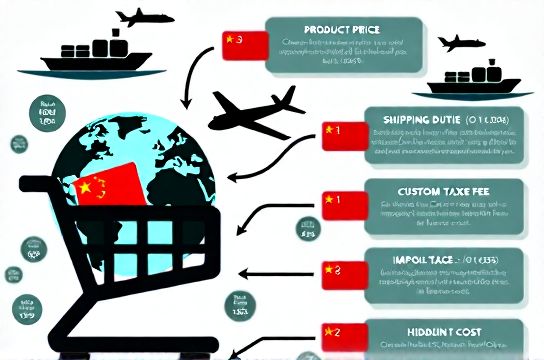How to Calculate Total Cost When Buying from China: Fees
- 时间:
- 浏览:31
- 来源:OrientDeck
So you're thinking about sourcing products from China — smart move! With competitive manufacturing costs and a vast range of suppliers, it's no wonder global entrepreneurs and retailers flock to Chinese markets. But here’s the catch: what you see isn’t always what you pay. Hidden fees, shipping surprises, and import duties can turn your bargain into a budget buster.

To truly calculate the total cost when buying from China, you need to go beyond the product price. Let’s break down every fee that could pop up — so you can plan smarter, negotiate better, and avoid nasty financial shocks.
1. Product Cost (FOB Price)
This is the base price quoted by the supplier — usually listed as FOB (Free On Board), meaning it covers production and delivery to the port in China. While this seems straightforward, remember: it doesn’t include shipping or import fees.
2. Shipping & Freight Charges
Two main options: air freight (fast, expensive) or sea freight (slow, economical). For bulk orders, sea freight wins. Here’s a quick comparison:
| Shipping Method | Transit Time | Cost per kg (approx) |
|---|---|---|
| Air Freight | 5–10 days | $4–$8 |
| Sea Freight (LCL) | 25–40 days | $0.80–$1.50 |
| Sea Freight (FCL 20' container) | 30–45 days | $1,800–$3,000 (flat rate) |
Pro tip: Always ask for DDP (Delivered Duty Paid) quotes if you’re new — it bundles most costs upfront.
3. Customs Duties & Import Taxes
This varies by country. In the U.S., for example, the average duty rate on Chinese goods is around 7.5%, but some items (like electronics or textiles) can go up to 25%. The EU and UK also apply tariffs based on HS codes.
Example: A $10,000 shipment to the U.S. could face ~$750 in duties — plus local taxes like VAT in Europe (often 20%).
4. Handling & Port Fees
These sneaky charges add up fast. Think loading/unloading, documentation, storage delays. At destination ports, expect:
- Customs clearance: $100–$250
- Terminal handling: $50–$150
- Delivery to warehouse: $200+
5. Middleman & Payment Fees
Using platforms like Alibaba? Third-party transaction fees (3–5%) apply. Wire transfers (T/T) cost $25–$50 per transfer. PayPal? Even higher. And don’t forget currency conversion — banks often add 2–3% markup.
The Real Total Cost Formula
Total Cost = Product Cost + Shipping + Duties + Handling + Payment Fees
Real-World Example:
You buy 500 units at $5 each ($2,500 total). Add $1,200 sea freight, $188 duty (7.5%), $300 handling, and $100 payment fees.
Final cost: $4,288 — that’s 71.5% more than the product price alone!
Smart Tips to Reduce Costs
- Negotiate FOB + DDP quotes
- Consolidate shipments to save on freight
- Use Incoterms clearly (avoid DDU confusion)
- Hire a reliable freight forwarder
- Check if your country has trade agreements reducing tariffs
Bonus: Tools like ImportYeti or DutyCalculator help estimate landed costs fast.
Bottom line? Sourcing from China can be incredibly profitable — if you account for all fees. Don’t just chase low unit prices. Look at the full picture. That’s how winners win.